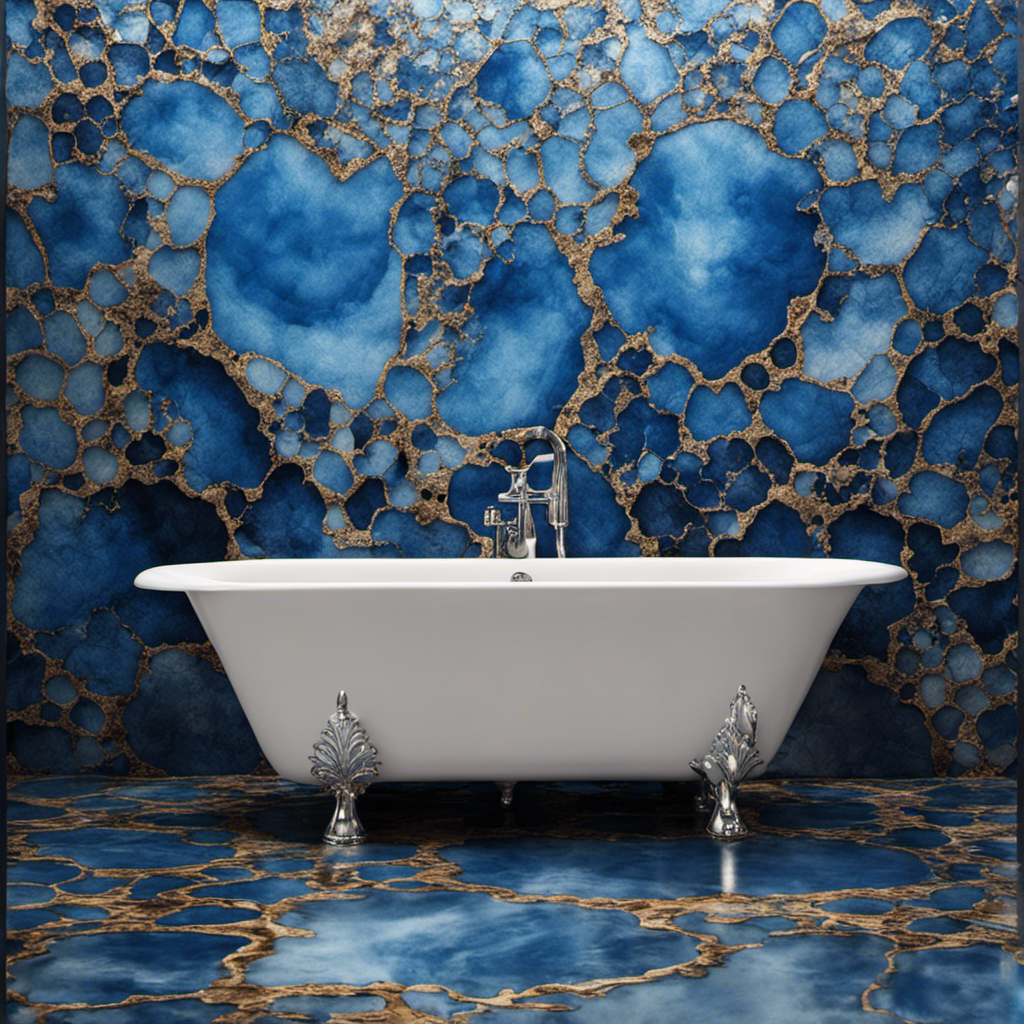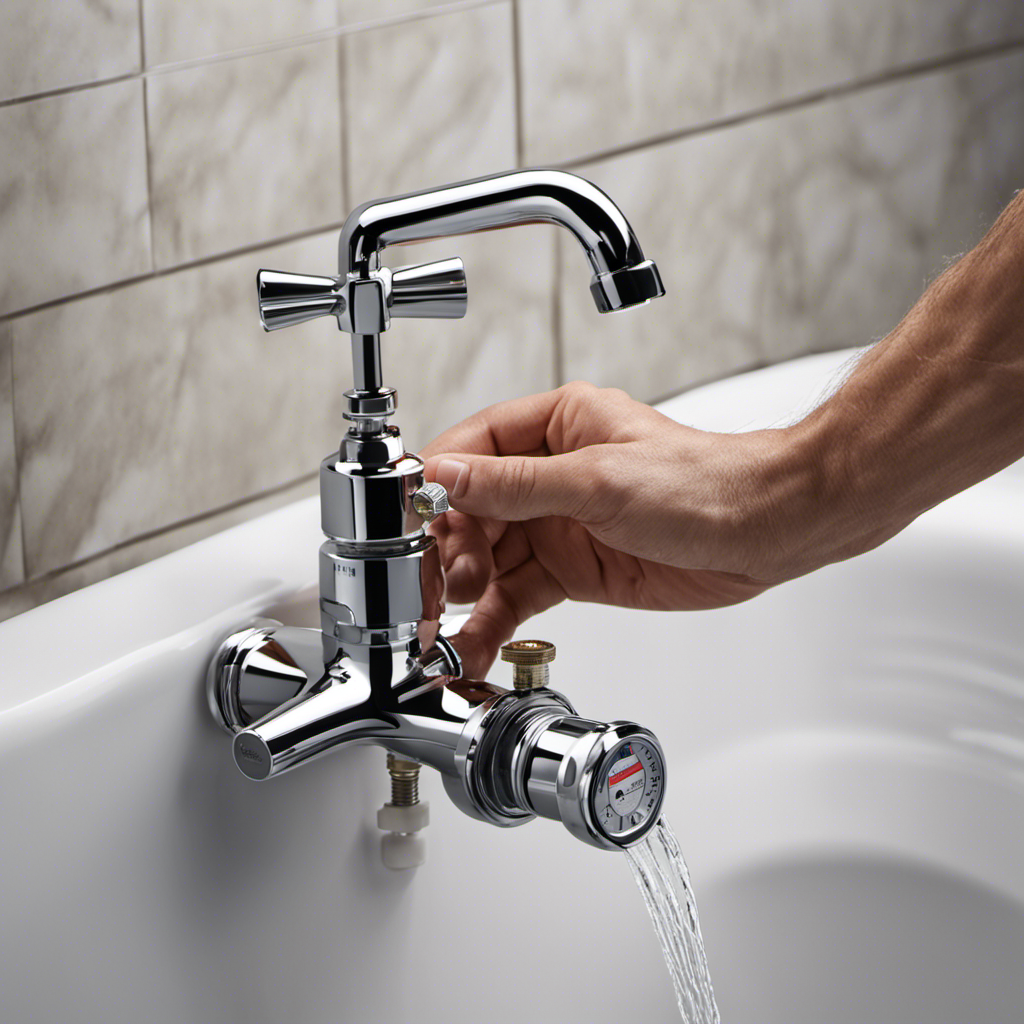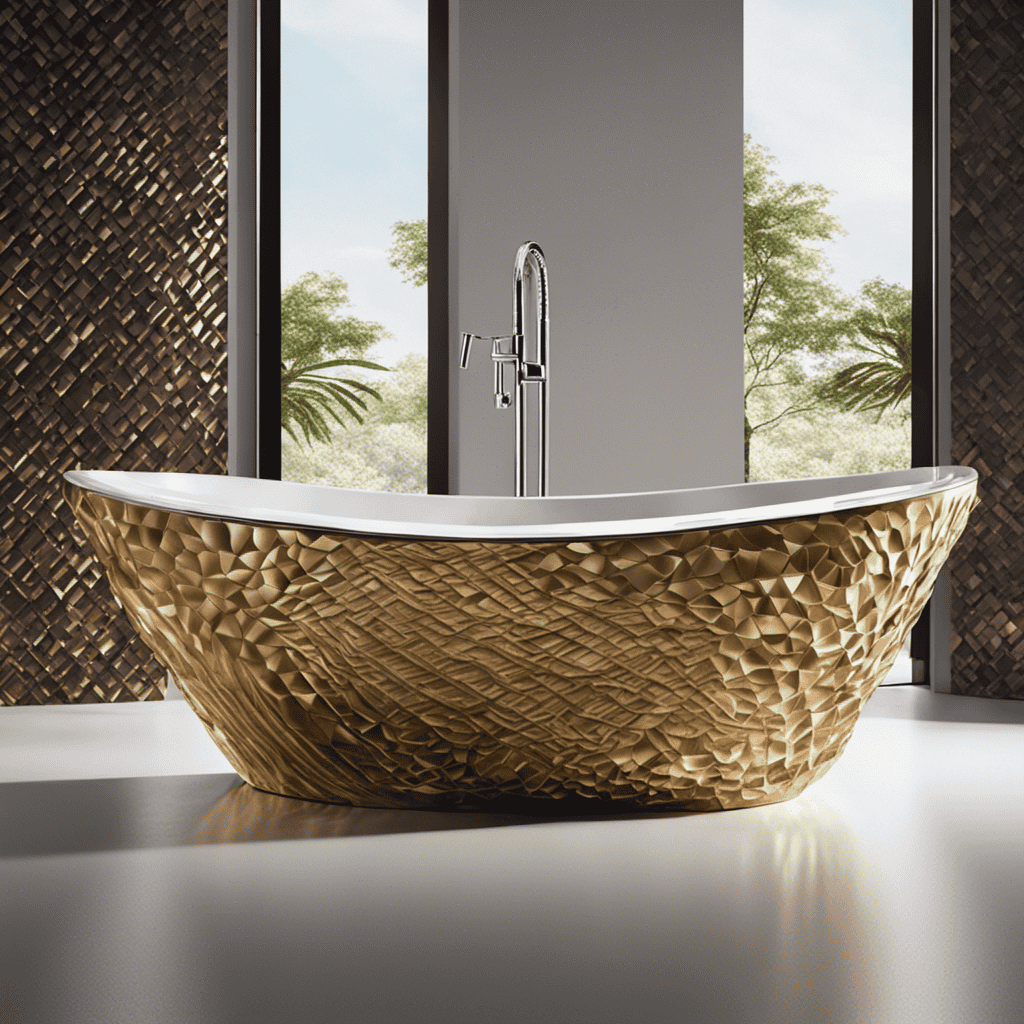As I step into the bathroom, my heart sinks at the sight of those stubborn blue stains in my bathtub.
But fear not, for I have unraveled the mystery behind these vexing marks.
In this article, I will delve into the world of blue stains, exploring the various culprits that contribute to their appearance.
From acidic water and copper pipes to chemical reactions with cleaning products, we will leave no stone unturned in our quest for knowledge.
So, join me on this intriguing journey as we uncover the secrets of the blue stains in your bathtub.
Key Takeaways
- Acidic water and copper pipes can cause blue stains in the bathtub.
- Copper-based plumbing fixtures can also lead to the formation of blue stains.
- Chemical reactions with cleaning products can trigger corrosion and discoloration.
- Blue-green algae, bacteria, and environmental factors like hard water and soap scum can also contribute to bathtub discoloration.
Acidic Water and Copper Pipes
If you have acidic water and copper pipes, you’ll notice blue stains in your bathtub. This is a common issue caused by the interaction between the acidic water and the copper pipes.
Copper is a reactive metal, and when it comes into contact with acidic water, a chemical reaction occurs. The acidity of the water causes the copper to corrode, releasing copper ions into the water. These copper ions then react with oxygen in the air and form copper oxide, which is blue in color.
To prevent this corrosion and the resulting blue stains, it is important to treat the water to reduce its acidity. Water treatment methods such as pH adjustment or installing a water softener can help neutralize the acidity and prevent further corrosion of the copper pipes.
Presence of Copper-Based Plumbing Fixtures
The presence of copper-based plumbing fixtures can lead to the formation of blue marks in the tub. Copper, a common material used in plumbing, can react with water and cause corrosion. This corrosion can result in the release of copper ions into the water supply, which can then stain surfaces like bathtubs.
To prevent this issue, corrosion prevention techniques should be employed. These can include using protective coatings on copper pipes or installing water treatment systems that regulate the pH levels of the water.
It is important to address this problem because copper toxicity can be a concern. High levels of copper in drinking water can have adverse health effects, including gastrointestinal issues and liver damage.
Chemical Reactions With Cleaning Products
Using certain cleaning products can trigger chemical reactions with copper-based plumbing fixtures, potentially leading to further corrosion and discoloration.
When these cleaning products are used, they often leave behind residue on the surfaces they come into contact with. This residue can react with the copper in the plumbing fixtures, causing a chemical reaction that results in corrosion and discoloration. The discoloration may manifest as blue stains in the bathtub, which can be difficult to remove.
It is important to choose cleaning products that are specifically formulated for use on copper-based plumbing fixtures to avoid these chemical reactions and prevent further damage.
Transitioning into the next section, another common cause of bathtub discoloration is the presence of blue-green algae and bacteria.
Blue-Green Algae and Bacteria
Transitioning into the next section, another common culprit for bathtub discoloration can be the presence of blue-green algae and bacteria. These organisms thrive in warm and stagnant water, which is often found in bathtubs. Here are some key points to consider:
- Algae blooms and water pollution can lead to the growth of blue-green algae in your bathtub.
- Blue-green algae produce toxins that can pose health risks when exposed to humans.
- Ingesting or inhaling contaminated water can cause symptoms like nausea, vomiting, and diarrhea.
- Prolonged exposure to blue-green algae can also lead to skin irritation and respiratory problems.
- Regular cleaning and disinfection of your bathtub can help prevent the growth of algae and bacteria.
As we delve into environmental factors and mineral deposits, it’s important to understand the role they play in bathtub discoloration.
Environmental Factors and Mineral Deposits
To prevent further discoloration, you should consider the impact of environmental factors and mineral deposits on your tub. Hard water and soap scum are two common culprits that can cause blue stains in your bathtub. Hard water contains high levels of minerals, such as calcium and magnesium, which can leave behind deposits on the surface of your tub. These deposits can react with the chemicals in soap, resulting in a blue discoloration. Soap scum, on the other hand, is a combination of soap residue and minerals that accumulate over time. This sticky substance can trap bacteria and other contaminants, leading to discoloration and staining. By regularly cleaning your tub and using products specifically designed to remove hard water stains and soap scum, you can prevent the formation of blue stains and keep your tub looking clean and pristine.
| Environmental Factors | Mineral Deposits |
|---|---|
| Hard water | Calcium |
| Soap scum | Magnesium |
| Soap residue | |
| Bacteria |
Conclusion
In conclusion, the mysterious appearance of blue stains in our beloved bathtubs can be attributed to a myriad of factors.
Just like a mischievous sprite playing tricks on us, acidic water and copper pipes can form a mischievous duo, causing the blue stains to dance across the surface.
The presence of copper-based plumbing fixtures can also contribute to this colorful phenomenon. Furthermore, chemical reactions with cleaning products can create a vibrant spectacle.
Let’s not forget the potential involvement of blue-green algae and bacteria, which can add their own artistic touch.
Finally, environmental factors and mineral deposits play their part, leaving behind their mark.
So, the next time you encounter these enchanting blue stains, remember, it’s just nature’s way of adding a touch of magic to our daily lives.










